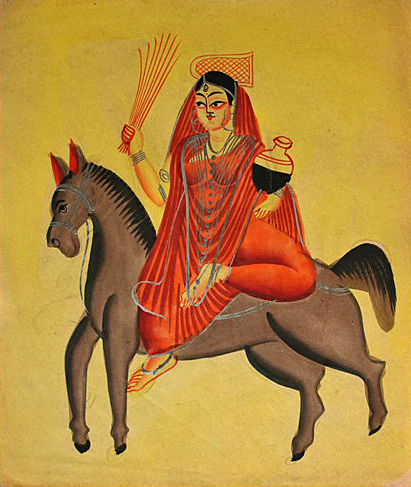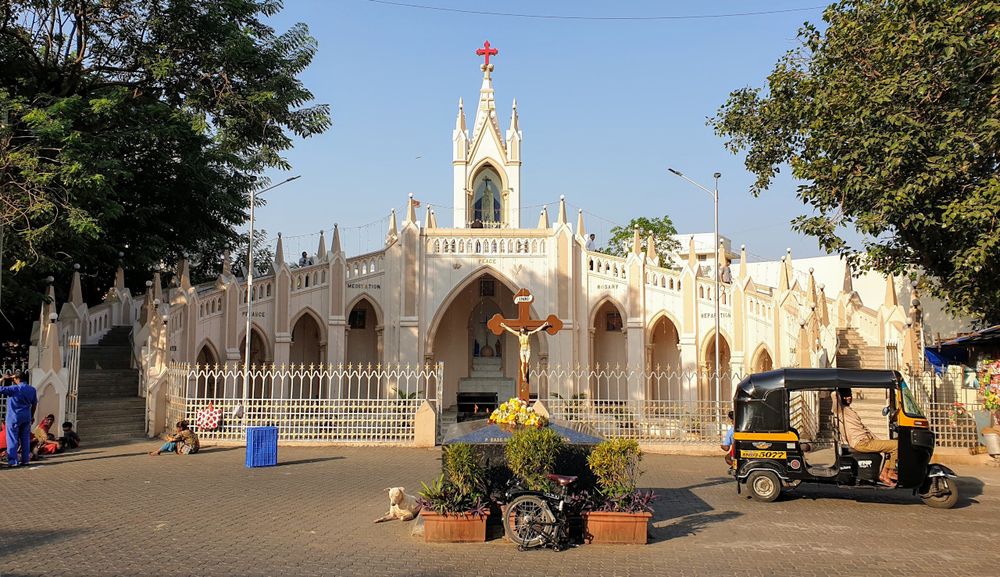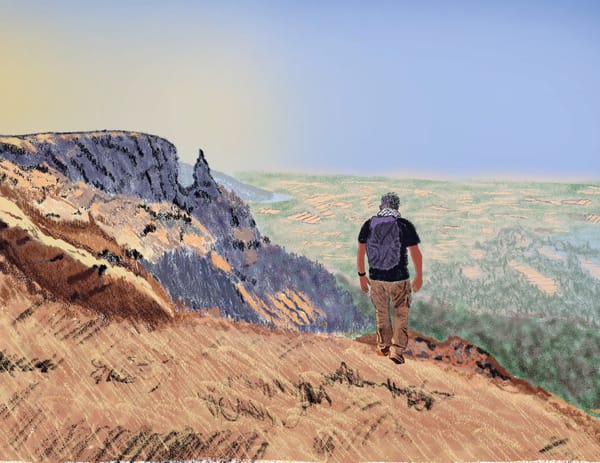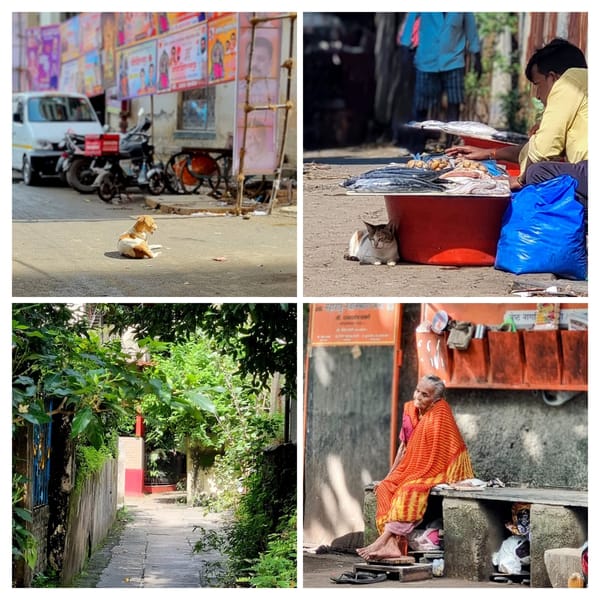Goddesses of Mumbai - A Cycling Exploration - Bandra, Mahim, Prabhadevi, Worli
This is the third part of the exploration of the Godesses of Mumbai. The following map shows the various temples of Goddesses in the Mumbai area. The locations marked in red are yet to be visited and covered by me. The other colors are already covered in this series.
- In the first part, I covered six temples in Andheri,Powai, Goregaon and Jogeshwari
- In the second part, I visited two temples on Madh and Ambu Island
Part Three - Bandra, Mahim, Prabhadevi and Worli
In this exploration, I covered these temples:
- Jari Mari Mata Temple, located in Bandra opposite the Bandra Lake
- Kadeshwari Barekani Mata Temple, located on the seashore near Bandra Fort
- Mount Mary Bascilica, located in Bandra on Mount Mary hill near Land's End
- Sitaladevi Temple, located in Mahim at the junction of Lady Jamshedji Road and Sitaladevi Temple Road
- Prabhadevi Temple, located in Prabhadevi at the junction of New Prabhadevi Marg and Muraru Ghag Marg
- Golfadevi Temple, located in Worli Village on Golfadevi Temple Road
- Vetal Temple, located in Worli Village near Worli Fort
Jari Mari Mata Temple, Bandra
My first destination was the Jari Mari Mata Temple in Bandra. Located on S. V. Road next to Bandra Lake, the temple is hard to miss. It is brightly colored and when I arrived, I saw a queue of devotees lined up for the temple to be officially opened.
The priest was still busy preparing for the opening, but I managed to get permission to enter before the other devotees. The idol of the Goddess is a stone covered with vermillion.
Devdutt Patnaik, the well known author who writes on relevance of mythology in modern times describes the origin of this Goddess as follows:
Across India, there are shrines associated with seven mothers or seven virgins, known as Sapta-matrika, usually simply seven vermilion smeared rocks next to ponds and river banks, near tamarind and neem trees. In Maharashtra they are known as Sati Asara, which is perhaps a corruption of “Sapta Apsara”. They are said to cause pregnant women to miscarry and young babies to develop rash.
More popularly, the seven mothers who cause fever are worshipped as one goddess, known variously as Jari-Mari Mata, Jari meaning Jvari or fever, and Mari referring to Maru or dry barren desert heat.
A plaque on the outside wall installed in 1996, three centuries after the Goddess' manifested herself at this location on Tuesday, 9th January 1696.
Every day, there are three prayers or "aarti", the first at 5:30 am, the second in the afternoon and the third one at 7 pm in the evening. During these prayers, the sounds of the drum shown in this picture resonate loudly in the surrounding area, summoning all the devotees to attend.
The temple overlooks the Bandra Lake, and I watched as the glimerring reflections of the rising sun shivered in the water.
Kadeshwari Barekani Mata Temple, Bandra
I then rode along the Bandra reclamation towards the Sea Link, and turned off towards Bandra Fort. But instead of following the road towards Lilavati Hospital, I turned left towards Reclamation Road, and took my bicycle towards the shore, and walked through the hutments towards Kadeshwari Barekani Mata Temple.
This Google Earth image shows the location of the temple and the fort, as well as my next destination, Mount Mary Bascilica. The best way to get to the temple is actually from Bandra Fort, following a path that is immediately to the left of the gates of the fort, that lead to the temple.
The temple is at the edge of the hillock on which Bandra Fort stands guard. The temple is just a few meters above sea level, and is constantly badgered with waves.
The idol of the Goddess is similar to the Jari Mari temple - a stone idol covered with vermillion. The Goddess is considered to be a form of Shakti. Quoting Devdutt Patnaik,
Shakti and Durga are two words that can be used interchangeably for the mother goddess. However, when we observe these words carefully, we realise they represent two different aspects of power. Shakti is power that comes from within, while Durga is rooted in the word ‘durg’ which means a ‘fortress’ – which can be built around us, and so refers to power that comes from the outside.
Shakti is innate psychological and physical power that we possess and can generate but cannot transmit, while Durga is material power that we can pass on: weapons that we hold in our hands, the technology that we possess to protect us, the laws that exist in society that grant us dominance and prevent us from getting exploited, our status, our privileges, our titles, our estates, our rights. Durga is thus externally manifested while Shakti remains established internally. Shakti embodies motivation, drive, resilience, patience that are key to success. But this is not enough: we need resources, regulations, skills, and team members who enable us. We need Durga too.
There is a nice courtyard in the temple complex from where one can get great views of the sea link. There were a bunch of young boys who were spending their holiday morning practicing spinning their wooden tops with string. I watched them with awe, as they deftly spun the top and did various tricks with the top.
From the temple, I climbed up the stairs towards Bandra fort. This path leads directly up to the fort entrance. In fact, this is the recommended way to reach the temple.
I paid a brief visit to the fort, but did not venture inside for I had another important destination to cover in Bandra before moving on to Mahim.
Mount May Bascilica, Bandra
I rode up the steep hill of Mount Mary to reach the bascilica at the top of the hill. I saw a big bunch of tourists streaming out of the church, and waiting for the crowd to clear before entering.

The interior of the bascilica is a beautiful, with ornate pillars holding up two balconies on either side of the aisle leading up to the dramatic altar.
The inside walls of this stone structure originally bore some beautiful murals, highlighting the events in the life of Mary, painted during the time of the first Rector. Since they had faded with the passage of time, they have been replaced by beautiful fiberglass murals depicting the same story of Mary (ref & pic credit)
The highlight of the bascilica is the Bandra Fair.
Roman Catholics consider September 8 to be the Nativity (birthday) of Mother Mary, and the annual Bandra fair at the 1904 Gothic-style Basilica of Our Lady of the Mount is one celebration that see people of all faiths participating in (ref)
Another associated highlight is the Bandra Feast.
Local historian Fr Larry Pereira, whose family lives in Ranwar village in Bandra points, pointed out that the feast was considered more important than the fair for most families in Bandra. "It was the birthday of Virgin Mary, the mother of Christ and families would give it due importance. "The families who lived in various gaothans (villages) like Ranwar, Pali, Sherly, Rajan, Chuim and Chimbai were know to have parties at home with music and folk songs," said Fr Pereira. (ref)
Sitaladevi Temple, Mahim
From Bandra, I made my way to Mahim to visit Sitaladevi temple, located at the junction of Lady Jamshedji Road and Sitaladevi Temple Road. As I was taking this photo, one street vendor outside the temple came running towards me, indignantly asking if I was taking a photo of his cow - the one seen grazing near the sidewalk. I was amused and said I was taking a photo of the temple. He insisted that if I wanted a photo of his cow, I would have to pay. But he let me off with a stern warning.
The stone structure that is visible from the street is in fact a temple dedicated to Vithoba and Rakhumai. Vithoba is the avatar of Lord Krishna worshipped by Maharashtrians.
The actual Sitaladevi Temple is located behind the Vithoba temple, and can be seen here within the arches of the Vithoba temple.
The Sitaladevi temple in Mahim has its origins shrouded in mystery. It is speculated that the Goddess might have been brought to Mahim by Raja Bimbadev in the 13th century when he shifted his capital here from Kelwe in Thane district, which was the first capital after moving from Patan. What is most interesting is that there is a very ancient Sitaladevi temple in Kelwe as well, and Kelwe is also known as ‘Kelwe-Mahim’. However, in the absence of hard historical evidence, it is very difficult to corroborate it (ref).

(pic credit) Goddess Sitladevi is also closely associated with the Sapta Matrika, the seven Goddesses that are linked to causing and curing fevers and rashes.
Very particularly when she causes pox, she is called Sitala, the cool one, cooled by curds and gifts of bridal attire and cooling ingredients such as neem, chillies, tamarind and lemon. In Sitala Mahatmya, she is described as riding a donkey and carrying a broom and a winnow basket containing pulses (which look like pox pustules) and a pot of healing water. Her companions are Jvara as well as Ghentukarna, who bring itches and skin diseases, and Raktavati who causes blood oozing fevers (ref).
Another shrine in the same complex is devoted to Goddess Shantadurga, a popular form of Goddess Durga revered in Goa, as well some parts of Karnataka. She is worshipped in almost all villages of Goa as an ant hill.
Prabhadevi Temple, Prabhadevi
Prabhadevi Temple is located in the area named after the Goddess. It is not as well known as the famous Siddhivinayak Temple nearby. It can be found at the junction of New Prabhadevi Marg and Muraru Ghag Marg. I parked my bike with the flower vendor outside, and took a basket of offerings from her to pay my tribute to the Goddess.
The Goddess Prabhadevi is the Kuldevi or clan goddess of the Pathare Prabhu community, who consider themselves to be the descendants of those followers, who accompanied Raja Bimbadev from Patan (ref).
Built in 1715, this 18th century temple has a very interesting history behind it. The main deity, Shakambaridevi, dating back to 12th century, was the famous goddess of Bimba raja of Gujarat. The Kalikadevi and Chandikadevi, two other manifestation of Shakti are sited on the either side of Shakambaridevi. Today known to all as Prabhavatidevi , the name Shakambaridevi lies forgotten. According to the temple priest, the story goes that when the Mughals invaded the area, the idols were shifted to safer location to escape the vandalism. They first found refugee in Mahim Creek and then in a well, located near the temple site (ref)
Prabhavatidevi appeared in the dreams Shyam Nayak who belonged to the rich Pathare Prabhu community. The temple was later built under his supervision and is now managed by the trust setup by the Kirtikar family, descendants of Shyam Nayak. At present, this 12th century idol made of black stone lies hidden under the coats of paint in an attempt to mask the years of slow deterioration (ref).
Golfadevi Temple, Worli
After Mahim, I rode towards Worli Sea Face, and entered the Worli fishing village towards the Golfadevi Temple.
Golfadevi is one of the trioka of Goddesses that are worshipped by the fishermen community in and around Mumbai. The three Goddesses are Golfadevi, Sakbadevi and Harbadevi. The temple on Madh island is dedicated to Harbadevi, while this temple is dedicated to Golfadevi. However, both temples have dieties of all three Goddesses.
The Goddess is well known for helping take Yes/No decisions.
Inside, on a raised platform sits Golfa Devi in the form of a black coloured stone idol adorned with a heavily embroidered cloth. She is accompanied by two more goddesses Sakba Devi and Harba Devi, the idols of both which are kept on her either side. As soon as a fisherman comes in to ask if it is safe to take the boat to sea that day, the priest places two tiny silver coloured balls on the shoulder of the goddess. He says a few prayers and then asks the worshiper to ask their question- either aloud or in their heads. If the silver ball on the left shoulder falls first, then the answer is apparently a no. If the right one falls, it is a yes (ref).
When I came out, I saw that my bicycle had attracted the attention of the kids from the neighbourhood. They inspected my bicycle carefully and asked me the usual questions of how much it cost and how it folded. I patiently answered their questions before heading towards Worli Fort.
Vetal Temple, Worli
When I was finding my way from the temple towards Worli Fort, one of the villagers asked me if I knew about the Vetal Temple. I asked him for details and he explained that Vetal was considered to be the brother of the three Goddesses, Golfadevi, Sakbadevi and Harbadevi.
The Vetal temple is located almost at the edge of the Worli village towards the sea link. It is a small structure located on the same road as the fort, just a few meters ahead of it.
And when I went inside, sure enough, next to the idol of Vetal were the idols of the three Goddesses. Vetal is considered to be a destroyer of storms and the grama devata or guardian of the village. The belief is that he moves through the village at night and keeps vigil on the property of the villages. Hence he is often depicted as wearing worn out Kolhapuri chappals, or sandals typical to Maharashtra (ref: Socio Cultural History of Goa by V. R. Mitragotri).
The view from the Vetal temple of the sea link and the Mahim bay with the boats moored in it is quite breathtaking!
That was my last destination for this exploration. I rode back from Worli, passing the famous Siddhivinayak Temple on my way.
This third part of my series on explorations of the Goddesses of Mumbai truly gave me some new insights into the history of the city I was born and raised in. In case you're interested, see the other explorations here:
- In the first part, I covered six temples in Andheri,Powai, Goregaon and Jogeshwari
- In the second part, I visited two temples on Madh and Ambu Island
I hope to continue this and explore more of the temples in Mumbai dedicated to Goddesses.




